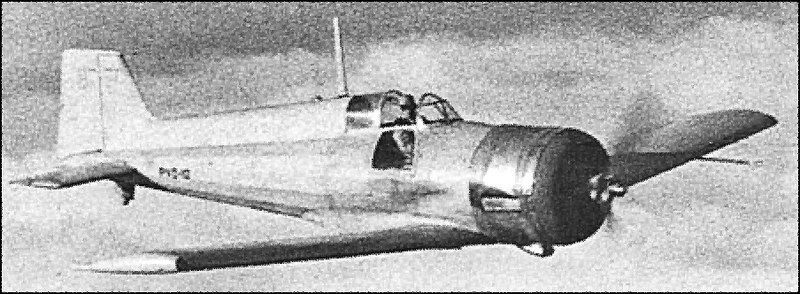I've been bitten by the 'what if?' bug... I'm fascinated by warplanes that might have been!
Preface: The Also-Rans...
It's tempting to think that Britain was lucky enough to have miraculously come up with excellent aircraft just exactly at the time when the nation needed them most. Designs like the Supermarine Spitfire and the Hawker Hurricane seemed to have materialised just in the nick of time, but the truth is that their inception wasn't without a lot of sweat, trial and error and some technological dead ends.
Important note: I am a 'potted history' blogger, that is I am apt to generalise in order to tell a short story as I see it. I make no claims for the absolute accuracy of my writing - I just want to get YOU interested enough in the subject so that you will go off and do some real research yourself! Now read on...
Britain's aircraft industry was hard at work throughout the 1930's trying to help the nation prepare for the looming and inevitable German aggression. Multiple companies had designed aircraft prototypes to the Air Ministry's specification for an advanced fighter and while we know who the winners were to eventually be there were some very interesting - but today almost unheard of - also-rans.
 |
| Above: The Martin-Baker MB 2 of 1938, based on a 1934 Air Ministry specification for a single-seat fighter, a spec that would result eventually in the Spitfire and Hurricane! Not every design was a winner! [Source: Wikipedia.] |
The main stumbling block (forgive the pun) was the lack of a good engine. As mentioned in my 'What if? Wib. 413' project - put very simply - Europe's arms race with the Luftwaffe's rearming mainly seems to have been dictated by some 'wrong thinking'. For whatever reason, the majority of fighter aircraft designs of the inter-war period seem to have been modest aircraft equipped with lack-luster medium powered radial engines.
On top of this, military strategists of the 1920s and 30s seem to have preferred the notion of a light weight and agile fighter (spoiler - as did the Japanese). Perhaps - and I'm guessing here - because a lighter and compact aircraft was the easiest way to get the most speed out of a light and less powerful engine?
And here's where we get to some of the Spitfire's erstwhile competitors in the late 1930s. Two of the aircraft that interest me, in particular, precisely illustrate the dilemma that Europe - and to some extent America - found itself in. How to get a competitive fighter with the available engines (mostly early radial designs) that could not quite get the same power as the amazing 'new' (1934) Daimler-Benz V12 DB 600 power plant (which generated 1,000hp)?
...So, it is perhaps understandable that aside from the technologically advanced Rolls Royce Merlin (1,030hp) equipped Hurricane and Spitfire everything else in the running seems to be fairly conventional and lethargic 600-800hp-ish radial powered light-weight designs!
Phew! (Deep breath)...And so my story begins!
1. An Unlikely Nag and Jockey
The race to the finish line in determining which might be next fighter or fighters to defend the country was - as I intimated earlier - a little more open than history leads us to believe. The first plane that piqued my interest from this period was the Vickers Venom, a relatively small fighter powered by - consequently - a relatively small engine (620hp Bristol radial). Or perhaps it's more apt to say that it had a small engine and consequently it was a small aircraft! (Potato patato?)
 |
| Above: The Vicker Type 151 'Jockey' of 1930. "In the late 1920s the idea of the interceptor fighter was forming. To deal with the faster and higher flying bombers, fighters had both to be fast at height and quick to get there." [Source: Wikipedia.] |
It had been developed from the Vickers Type 151 Jockey, itself a light-weight, low-wing monoplane of a class which became known as a 'Jockey' type (hence the 151's name)...
"Between the wars it was the French who were champions of the "light fighter" concept, a class of aircraft they referred to as 'jockeys'..." [Dinger's Aviation Pages. Worth checking out for more detail on the Vickers Venom as it actually was.]
In essence, this type could be defined and a very stripped down interceptor, the 'powers that be' having recognised the importance of defending against high altitude strategic bombing and therefore speed to engage was everything. The later 1936 Vickers Venom (or 'Type 279') followed this formula to produce a lithe and nimble fighter which stretched the then available technologies to their greatest extent.
 |
| Above: The Vickers Type 279 Venom of 1936 - progress since 1930 but was it progress enough? [Source: Wikipedia.] |
...Unfortunately, the fly in the ointment was that both R.J Mitchel and Willy Messerschmitt were already finalising designs that would make all other aircraft then being trialed obsolete! (Du-oh!)
The potential inadequacies of the Venom and it's concept were, however, becoming quite obvious even at the time and despite the recognition of it's potential - and notions of an up-engined and improved model - the entry of the Spitfire onto the scene sounded the death nell for the Vicker's aircraft. Consequently, the Vickers Venom prototype was relegated to a testing curiosity by the start of the war and pretty much forgotten about.
The Venom That Might Have Been?
 |
| Above: Conceptual artwork by John Dell of a hypothetical Sea Venom based on the original Vickers Venom design. Now this is little more than the application of a Royal Navy colour scheme, no 'improvements' were made to the original aircraft configuration. I, however, want to go a step further than this... [Source: Dinger's Aviation Pages on the Venom.] |
Drawing Conclusions
So, this is where my drawing started, I sort of '1940'ed the pants off the original Venom to produce an outline sketch of what I am calling the new and improved 'Venom II'!
My version has put on a bit of weight, mainly due to the inclusion of a Wright 1,000hp R-1820 Cyclone, to replace it's temperamental 625hp Bristol Aquila AE-3S radial engine. This would still mean that my Venom II might still be slower than top line land based aircraft of the time but this was a trade-off that I think is acceptable for a carrier-based aircraft.
[I am guestimating a rough equivalency in performance to the Curtiss P-36 Hawk but with even better manoeuvrability. Perhaps!]
Having contrived an 'upgrade' path for my Venom design I then had to concoct a fiction period colour scheme for it. In the end I applied my take on an historic Fleet Air Arm scheme from about 1942. I slowly built my shading and colouring to give a worn look...
It soon became very clear to me that in this guise my Venom II was very much a Grumman F4F-4 Wildcat doppleganger (or 'Martlet' as it became known in Royal Navy service), which raised some interesting questions. Of course, this passing resemblance to the US naval fighter has more than a little to do with the choice of a similar type - though smaller - engine. There is also the angular wing and tail shape and the forward and high sitting cockpit.The fact that the Royal Navy eventually did procure the American Wildcat in 1940 is an amusing irony here. So some would say, thank goodness we hadn't gone to all the trouble to develop the Venom when we could have just eventually gotten a near identical or better fighter from the Americans!
Anyroad, amusing historical paradoxes aside, my Venom II progressed rather nicely and I was pleased with the result of my attempt as a weather-worn camouflage. It seems that with each successive aircraft profile I learn a better way of doing something or a new effects technique, or both! So here's the result...
In Conclusion
Wasted effort? Well, in the context that in making an 'improved' Vickers Venom all I have really done is 'reinvented the wheel' with a Grumman Wildcat look-alike I suppose you might be right. But it was fun!
And, an interesting point might be that, back in 1939 Vickers would not have known what an improved Venom would have been similar to. But the most tantalizing notion about all this is this...
The light-weight agile fighter concept that I mentioned the Venom design was based upon is remarkably like the idea that was behind the Mitsubishi A6M Zero. The fact that Jefferey Quill identified the Venom's qualities as those that might make it a 'very good carrier-based naval fighter' makes me wonder if these were the same qualities that defined the Zero's design? And, in that case, how close might have a Venom II been to the Japanese fighter? Hmmmm.... Intriguing.
Furthermore, If my Venom II came anywhere close to being as good a fighter as the Gruman Wildcat then I wonder what a Venom III - fitted with a Pratt & Whitney R-2800-10W Double Wasp - might have been like? A British Hellcat [Grumman F6F] perhaps? 😉
--------------------
Next: In Part 2 of 'Heroes of Zeros' I will take a look at the second of the 1934 British fighter specs that interests me - The Gloster F5.





Post a Comment